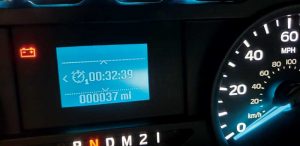Extreme idle times
Extreme idle times can also lead to carbon build-up in the particulate filters in the modern emissions engine as the diesel oxidation catalyst never reaches temperatures high enough to burn out and oxidize the spent carbon particles. This could require having the particulate filter removed and cleaned out at the dealership or repair facility that is properly equipped with the machinery to do a complete clean out.
Again, this can be expensive both in terms of the price of the service as well as downtime when the equipment should be out doing service or installation.
Another point on the changing of engine oil is that many vehicle manufacturers recommend separate summer-weight oils and a winter-weight oil. Recommended oils greatly help start up the engine in winter and reduce wear and high heat resistance in the summer, resulting in ease of use, saving in wear and tear, and environmental protection.
Another thing to consider is to make sure the oil used in the truck has all the proper additives the vehicle requires. Some common additives, such as zinc, phosphorus, graphite, and bismuth, have been greatly reduced or completely removed from certain types of oils as these can cause failures in engines with mechanical injection/injection pumps and flat tappet cam shafts and lifters. Using oils that contain these additives can also lead to mechanical issues. When in doubt, check with the truck manufacturer’s owner’s manual.
This is not a completely new concept, but it has become increasingly relevant. Engine hours can be measured with an hour meter, using either an aftermarket one or one that is provided from the factory on certain truck models.
Factory provided hour meters, if not mounted as a separate gauge on the dash (or in some cases under the hood), will be a feature located on the odometer screen along with trip distances.
Measuring hours of operation versus fuel burned
• 3.79-L (1-gal) of fuel normally will equal 48 km (30 miles) or 3.6 kg (7.92 lbs) of fuel per hour. These measurements will also give a good metric which to figure the usage into a cost ratio for billing.
• This is a nominal value and fuel mileage and fuel burn per hour may vary with the type of vehicle and equipment.
For assuming billable hours to the client, other factors can be included such as the original purchase price of the equipment, and if it is on a deprecation schedule, along with tire life, insurance cost of vehicle, average general maintenance costs, permits to drive the vehicle, and if a special licence for the driver/operator of the equipment is required. These measurements can be done with something as simple as a daily driver’s log or from the previously mentioned engine hour meter to the more advanced use of telematics.
The telemetric systems range from simple to advanced and can provide current GPS location, travel times, truck usage, PTO times, idle times, non-used times, such as a lunch break or being parked for an extended period, such as for doing interior sign or lighting installation. It also records fuel consumption, hours of operation, maintenance, and downtime due to truck or equipment breakdowns.
This also makes a good case for having a remote stop-and-start as it relates to a crane sitting and idling all day long even when not in use. Most modern PTO-driven equipment has a remote stop-and-start, but it should be checked occasionally by the maintenance manager to ensure it is operational.
The PTO remote start-and-stop function is an often-neglected item as it does directly interfere with the running of the equipment. If it is not working correctly, it should be rectified soon. It can not only save money on fuel and maintenance but can also operate as a safety device in case of a stuck valve or joystick or short in the equipment.
It is the downtime and associated expense of operation that can be a very eye-opening record to review. It will give business owners an accurate picture of true return on investment (ROI) of the equipment that is in use in their shop.
Bryan Wilkerson is vice-president at Wilkie Mfg LLC in Oklahoma. He has been in the industry for 32 years and has been a member of several sign association boards. He is also an advisor to the crane safety board for the Canadian Standards Association (CSA). Wilkerson can be reached at bryan@wilkiemfg.com. For more information, visit www.wilkiemfg.com.







